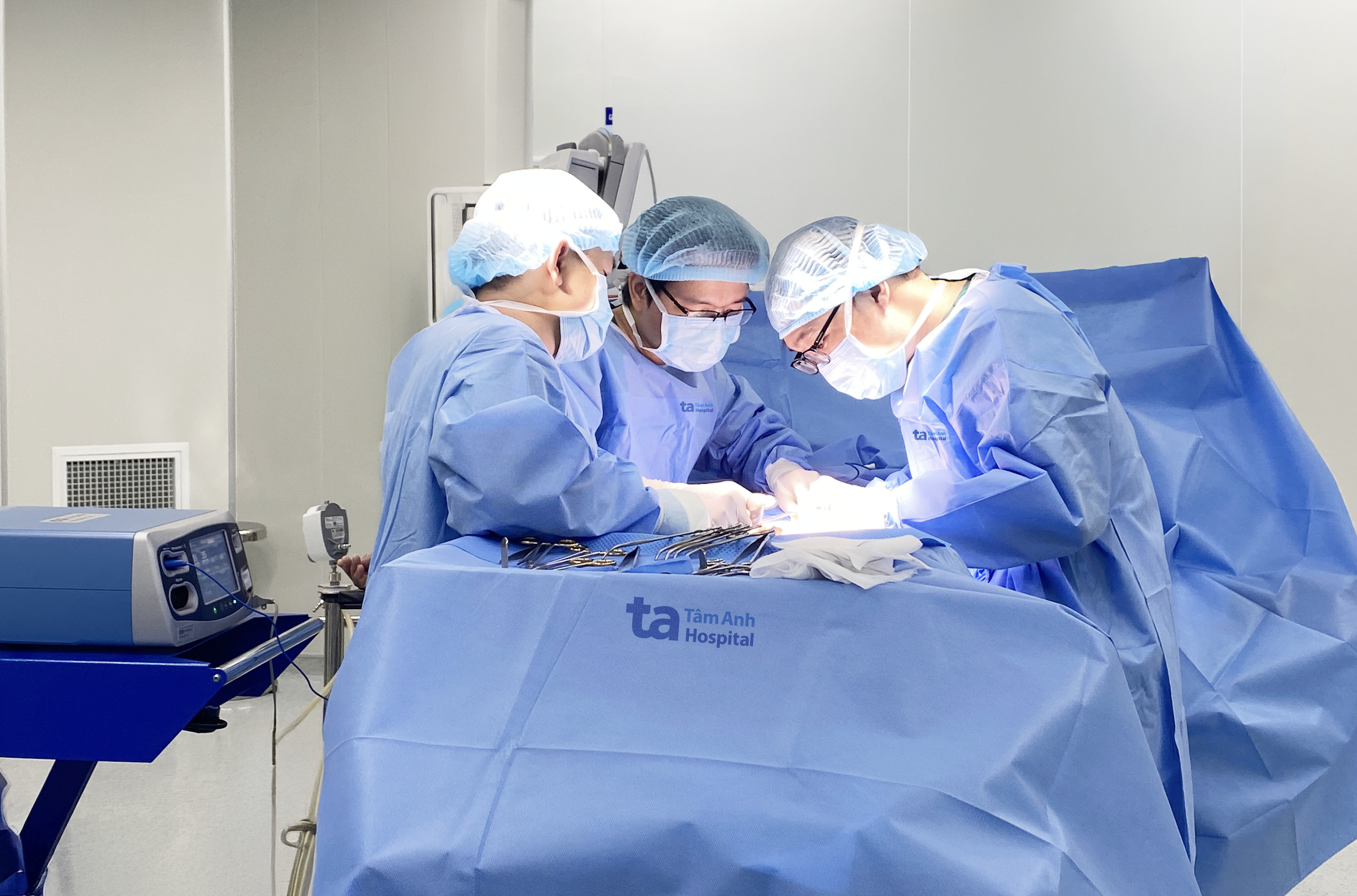An MRI scan at Tam Anh General Hospital in Ho Chi Minh City revealed a 7x8 mm tumor in the patient's left testicle, with lesions suspected to be cancerous. Associate Professor, Doctor Vu Le Chuyen, Director of the Urology - Nephrology - Andrology Center, recommended surgery to remove the tumor and mitigate the risk of it spreading to other organs.
Doctor Tran Huy Phuoc, part of Manh’s surgical team, explained that removing one testicle does not significantly affect sexual function. The remaining testicle, being of normal size, can compensate by increasing the production of testosterone and sperm to maintain fertility. As Manh already has children, he consented to the surgery.
The surgical team removed the entire left testicle, epididymis, and affected spermatic cord. Subsequent pathology confirmed the tumor was cancerous.
 |
Doctors perform surgery to remove Manh’s left testicle. Photo: Tam Anh General Hospital |
Doctors perform surgery to remove Manh’s left testicle. Photo: Tam Anh General Hospital
Testicular tumors can be caused by undescended testicles, varicocele, hydrocele, testicular torsion, epididymal cysts, epididymitis, or cancer. These tumors can be benign or malignant. In the early stages, depending on the tumor's characteristics, doctors may surgically remove the affected testicle. If the tumor has metastasized or spread to other areas, radiation therapy or chemotherapy is recommended. With early detection and treatment, the cure rate for testicular cancer can reach 90%, and the 5-year survival rate is over 95%.
Men should regularly self-examine their testicles to detect any abnormalities promptly. If they experience any discomfort, obstruction, or unusual pain in the scrotum or testicles, they should seek medical attention immediately.
Ha Thanh
*The patient's name has been changed.












